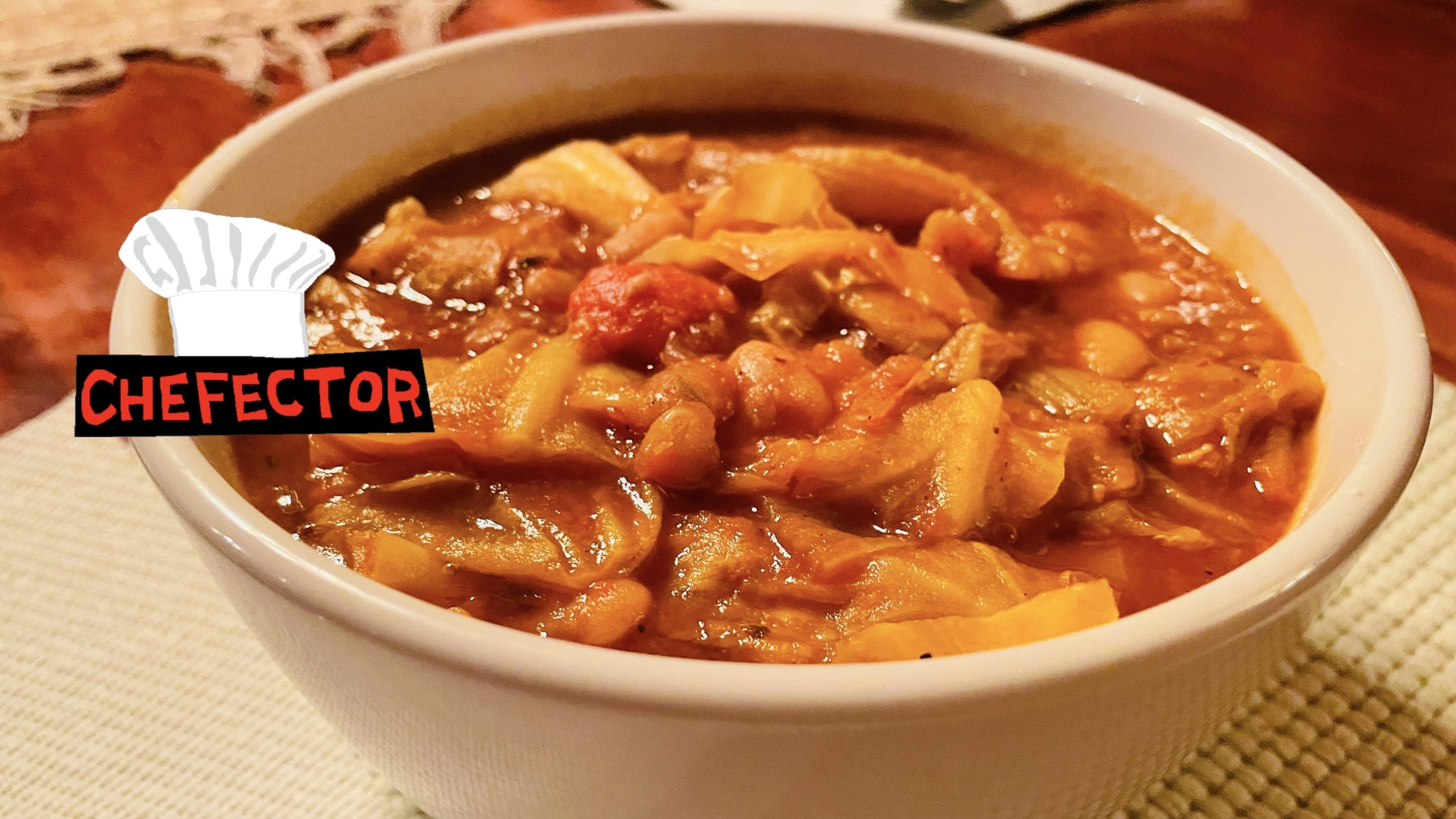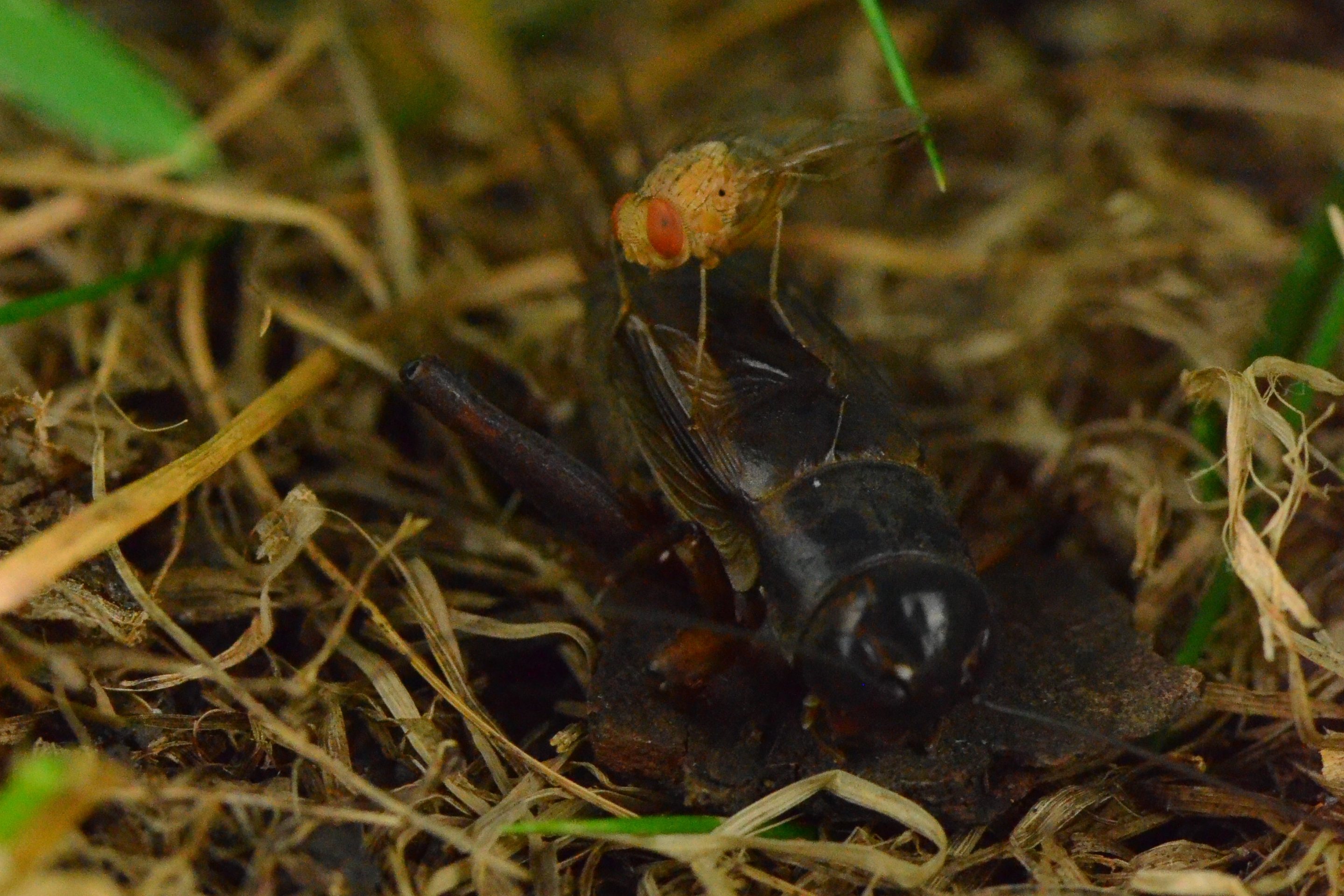A Pot Of Beans, By Any Other Name
10:12 AM EST on December 11, 2021

Cassoulet. Feijoada. Black bean soup. Cowboy beans. Boston baked beans. Fine foodstuffs, all. Each of these is a pot of beans. I am just talking about a big frickin' pot of beans I made out of stuff in my kitchen when I couldn't go grocery shopping.
In a manner of speaking, the above dynamic describes pretty accurately where all those proper-benouned pots of beans came from in the first place: Some people had some stuff—beans, unsexy vegetables, maybe some bones or a small amount of meat, water, precisely one pot—and not fancier stuff instead, because it was what was available to them and they were common people who could not enjoy the ruinous modern bourgeois fantasy of choosing willy-nilly their nightly dinner from among all the edible things on planet earth. The other thing they had was hunger. And so they applied their abundant and hard-won knowledge of cooking with modest ingredients to this humble stuff, and the result was a tasty and hearty pot of beans. And then somebody was like, "Dang, this is good. What do you call this stuff?" And they were like, "Uhhhh ... cassoulet?" And here we are, centuries later, with admonishments about exactly what shape of expensive earthenware one must have if one hopes to make an authentic version of what started out as somebody going, "How will I turn this miserable stuff into dinner?"
Do not get me wrong! I love cassoulet, the famous French dish of beans slow-cooked in stock with poultry, sausage, and pork; I mean no disparagement by pointing out its humble origins as peasant food. For a family gathering a couple of months ago I made not one but two gigantic cassoulets (chicken instead of duck), fussing over authenticity and correctness the entire time. But this blog is not about that. This blog is about the time last week that I was like, "What can I do with this dusty old bag of dried white beans without spending any of the alarmingly few dollars available to me," spent five minutes rummaging through various places in my kitchen, and cooked a satisfying meal—an experience, perhaps ironically, much closer to that of cassoulet's original creators than any attempt at following a cookbook or restaurant chef's recipe for authentic cassoulet ever could.
Is it weird to write an instructional food blog about this kind of cooking? I don't know. If it is, that in itself may also be weird. At the old website I operated under at least a couple of unenforced incentives—largely benign and sometimes helpfully clarifying but always real and compelling—to write instructions for the kinds of familiar food preparations that have proper names and about which people have opinions: In the near term, there's a kind of attention-grabbing boldness to being like, "Actually, here is how to barbecue ribs"; in the medium term and ever after, as long as the internet exists, there likely will be people out there googling "how to barbecue ribs," so there will always be at least some number of readers finding their way to a blog post titled, simply, "How To Barbecue Ribs," especially if it actually explains how to do that, give or take 1,500 extra words. This makes it evergreen.
A known, pre-existing foodstuff is a landmark in the online wilderness: People will make their way to it. If that sounds cynical or sinister, if the word "clickbait" is flashing in your mind right now, pause to consider that the entire reason to publish literally anything online is so that people will read it; in the case of service-y stuff like the earnest (I swear!) effort to help readers grow their skills and confidence as home cooks, this all seems pretty straightforwardly good. Also, I dunno, it's at least possible for there to be something sort of warm and life-affirming in the idea that all these innumerable blogs about the proper or easiest or absolute best way to make a croque monsieur are in conversation, intentionally or not, iterating on and responding to each other, in the great and ancient human project to figure out the best possible ham and cheese sandwich.
If there's a downside to all of this, maybe it's in how this can strand the stomach-haver who's starting their search for knowledge not from the desire to cook this or that dish they've heard of or enjoyed before, but from the super-duper-normal experience of simply having access to whatever motley assortment of ingredients and cookware and time happens to be available where they are or within their tight budget, and no clear knowledge of how to transform it into a meal that nourishes someone and leaves them feeling satisfied and cared-for. If it happens to be the case that the stuff and equipment accidentally available to this person is what they would need to make cassoulet or feijoada or Senate Bean Soup, that's terrific—but even if it isn't, they still need to make dinner. That poor sucker seems like they could benefit at least as much from the internet's help as somebody who is curious to try out a new timballo recipe!
I don't know how I got off track and into writing about the incentives of online publishing and how they serve or do not serve the needs of the harried and broke home cook! It's too late to turn back and find out. My point here is only that the experience of that stomach-haver from the previous paragraph is where all our world's various famous pots of beans came from, originally, and it feels good and true to understand them that way, even if I already said basically exactly this back in the second paragraph. This is because beans are easy to grow and work with, abundantly nutritious, and cheap. You do not have to know what to call your pot of beans to enjoy, quite a lot, eating what's in it. I made a tasty and satisfying pot of beans, with no ingredients fancier than a particularly handsome carrot. Here's how I did it; maybe you can also do it this way.
I had a one-pound bag of dried great northern beans. God only knows where it came from, or how long it had lurked in the recesses of my kitchen before I unearthed it. Possibly it had been in this house longer than my family has. Possibly I ended one of the great silent transits of history when I delivered these ancient beans, at last, from cupboard darkness to their fate. In any event that's the kind of beans I had, even if I have no memory of ever having purchased them. Nothing about the following cooking procedure would have changed more than marginally if they'd been cannellini beans or pinto beans or big fat white beans or just about any kind of dried bean other than the jelly kind. If you have a bag of dried beans in some dusty recess of your home, it's almost certainly fine for this.
I soaked the beans overnight in a big bowl of salty water. (Folk wisdom says soaking beans in salted water is Bad, but folk wisdom is Wrong.) The beans double in size as they soak, so I used a lot of water. When I was ready to cook the beans, I drained them in a colander and hosed them down with cold fresh water to rinse off the brine.
I had two quarts of nice rich chicken stock, the kind made with lots of bones so that it turns into poultry-flavored Jell-O when it cools. If you do not have chicken stock, do not despair: If you have water and aromatic vegetables and salt, you'll be fine. I had a big yellow onion, and diced it. I had a few cloves of garlic, which I smashed. I had a few stalks of slightly pale and rubbery celery that had maybe spent a couple more days than ideal at the bottom of the vegetable drawer in the fridge, which I cut into three-inch lengths. I had a couple of huge carrots, including the aforementioned extremely handsome one; I peeled these and cut them into huge thirds, crosswise, so that there would be big honking hunks of carrot in whatever came out of this endeavor. I had some green cabbage—three weird little misshapen heads from a local farm stand, one of them perfectly cone-shaped, which amounted between them to as much usable cabbage as you'd find on one large cabbage at the typical supermarket. I sliced these up into inch-wide strips, discarding the hard core of each. This could just as easily have been another sturdy cooking green, like kale or collard greens, but cabbage is my favorite and it's what I had.
I had dried herbs: thyme, rosemary, bay leaf. I had salt and pepper. I did not have any meat or poultry; if you have those, and want to use them, suit yourself. But! I did have, and virtually always have, some tinned anchovy fillets, which reliably deepen and umamify flavors in the absence of meat. If you don't have those, Worcestershire sauce or fish sauce will also do nicely. I had olive oil. This could just as easily have been butter or rendered bacon fat or whatever. My kitchen had other stuff in it—breakfast cereal and yellow mustard, for example—but nothing else made its way into the pot of beans. If you wish to put breakfast cereal and yellow mustard in your pot of beans, please do keep that information to yourself. Let's just assume you have the above stuff, and cook it.
Preheat your oven to 350 degrees.
Haul out your Dutch oven or stockpot or your biggest, deepest saucepan. In it, heat up a couple glugs of your cooking oil over medium-high heat until it's shimmering and hot. Dump the diced onion in there, sprinkle it with salt, and cook it, stirring every few minutes with your cooking implement of choice, for, oh 10 or 15 minutes, until the onion is softened and moved in the direction of translucency and there's maybe even some sticky onion residue turning brown on the bottom of the pot. Chuck in the smashed garlic cloves and the anchovies, if you're using them.
Move everything around casually for the next few minutes; the garlic will heat up and smell good, and the 'chovies will dissolve and begin sticking to the bottom of the pot, which is good. Next, in go the carrots and celery. Toss the pot's contents around with your wooden spoon or spatula or novelty Master Sword replica or whatever while the newest stuff heats up and cuts loose some rockin' aromas.
By now, hopefully, you've got a decent layer of browned gunk on the bottom of the pot; it's fine if not (maybe your pot is nonstick?), but your pot of beans will taste better with this gunk in it. Pour in the stock (or water) and use your implement to scrape the bottom of the pot; the gunk should loosen up pretty abruptly in the presence of the liquid.
You did that previous step before adding the beans to the pot for the simple reason that it's easier to scrape that gunk off the bottom without eleventy thousand beans in the way. You can chuck the beans in there now. They should settle far beneath the surface of the liquid; if I had a stroke while writing some earlier paragraph of this blog and really fucked up the ingredient measurements, and thus there's only enough liquid to barely cover the beans, then you will need to add more liquid until the beans have at least a couple of inches of liquid above them when they settle in the pot. Grind some pepper in there too. Toss in a couple bay leaves and maybe, oh, a teaspoon each of whatever other dried herbs you feel like including.
Taste it. The other flavors won't have developed all that much yet, but you can check for the salt level. Does it need salt? It probably needs salt. Add some salt, stir, and taste again.
Bring the liquid up juuust to a low boil, then put an askew lid on the pot (so that there's a nice wide gap for evaporation), stick the whole thing in the oven, set a timer for, oh, maybe 90 minutes, and go stream a movie of modest duration. The Killing (1956) accomplishes a depth and clarity of storytelling in its scant 85 minutes that Tenet couldn't have equaled if you'd tripled its 150-minute runtime, without ever seeming rushed or like it's bullshitting its way past plot holes the size of all outdoors. Check it out! You will also have time for a pee break.
So, 90 minutes have gone by. Carefully, with potholders, so as not to burn yourself on any hot surfaces, pull the pot out of the oven, close the oven to keep it hot, and extract two (2) beans from the pot. Eat these beans, possibly after blowing on them to cool them off. Are they soft and creamy in texture, and delicious from absorbing the stock? Great. That means you can move on to the next paragraph right now. If they are not soft and creamy in texture, hm, I am not quite sure why, but: Sock the pot back in the oven with the askew lid on there and give it another half-hour to cook, before extracting and testing a further two (2) beans for doneness. Repeat however many times you must, ideally confirming at some point that your oven is, in fact, on. Eventually, if it is, then the two (2) test beans, and by implication all their brethren in the pot, will become soft and creamy in texture. Then you can move on to the next paragraph.
Stir the sliced cabbage into the pot. Maybe go a handful at a time if there doesn't seem to be enough room for all of it at once; each handful will begin to wilt and soften once it's had a good dunking in the liquid. If your pot turns out to maybe be a little on the small side and the liquid threatens to overflow before all the cabbage is in there, that's fine, just stop there. After all, this is a pot of beans, first and foremost, and not a pot of cabbage. In any event, when your pot contains however much of the sliced cabbage you can fit into it, and that cabbage has all been stirred and/or folded evenly among the pot's other contents, stick the pot back in the oven for, oh, another 20 minutes.
Do not fret that the beans are going to dissolve in there. They aren't. You needn't aspire to medium-rare beans! Truth be told, it is quite nice for the beans to have become very soft and delicate by the time you eat this stuff. The cabbage, by contrast, will turn into wan, grey, unappealing mush if you leave it cooking too long, which is why you added it toward the end of the process instead of at the beginning. When the 20 minutes are up, extract one (1) strip of cabbage and taste it. If it's no longer crunchy, but still well short of mush—if it's delicious and you want to eat it now—then it's done. Ladle it into bowls.
Wait, I can hear some of you thinking. This is just... a pot of beans? I told you it was just a pot of beans! A good tasting, hearty, satisfying, easily accomplished pot of beans, enough to feed six people, made out of like four bucks' worth of the kinds of ingredients available just about anywhere. But I don't need any instructions for making a dang pot of beans, you are now screaming, rending your shirt very insanely. Fair enough! But somebody does. The rest of us will have to console ourselves by calling it, like, beannaulaire or some shit, and being sure we've cooked it Correctly.
If you liked this blog, please share it! Your referrals help Defector reach new readers, and those new readers always get a few free blogs before encountering our paywall.
Assignment Editor
Stay in touch
Sign up for our free newsletter




